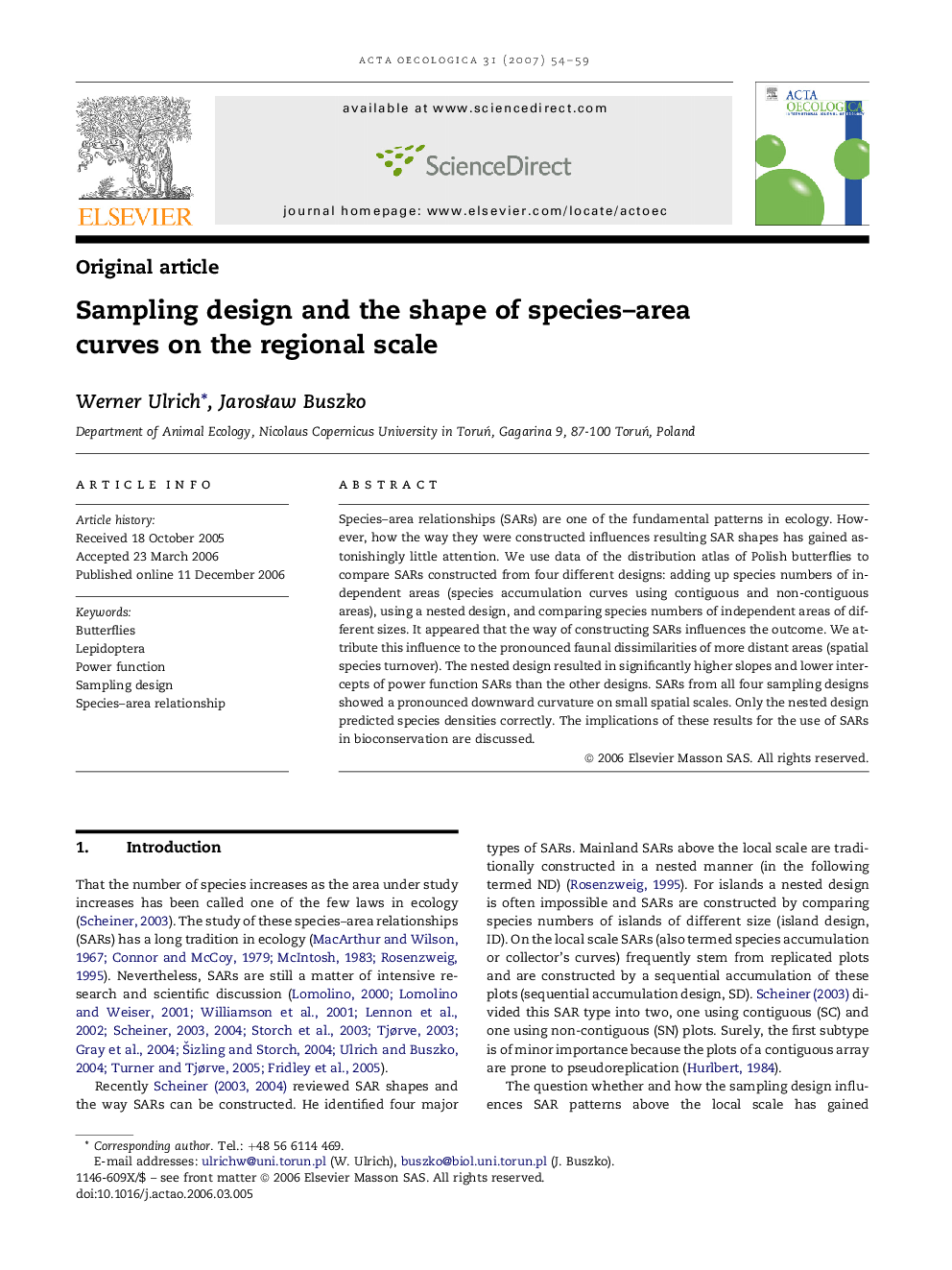| Article ID | Journal | Published Year | Pages | File Type |
|---|---|---|---|---|
| 4381733 | Acta Oecologica | 2007 | 6 Pages |
Species–area relationships (SARs) are one of the fundamental patterns in ecology. However, how the way they were constructed influences resulting SAR shapes has gained astonishingly little attention. We use data of the distribution atlas of Polish butterflies to compare SARs constructed from four different designs: adding up species numbers of independent areas (species accumulation curves using contiguous and non-contiguous areas), using a nested design, and comparing species numbers of independent areas of different sizes. It appeared that the way of constructing SARs influences the outcome. We attribute this influence to the pronounced faunal dissimilarities of more distant areas (spatial species turnover). The nested design resulted in significantly higher slopes and lower intercepts of power function SARs than the other designs. SARs from all four sampling designs showed a pronounced downward curvature on small spatial scales. Only the nested design predicted species densities correctly. The implications of these results for the use of SARs in bioconservation are discussed.
